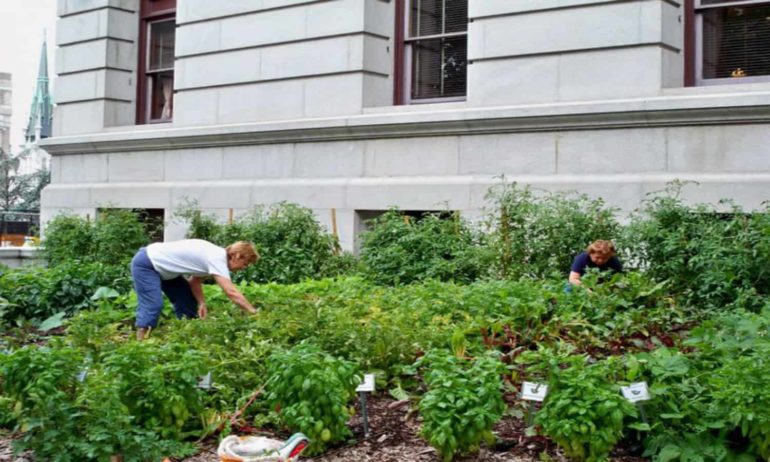Hunger-Free Pennsylvania (HFPA) is a network of food banks and charitable organizations. HFPA works to ensure that hunger alleviation programs in Pennsylvania receive the resources necessary to carry out operations. In addition, the organization advocates for meaningful policy changes by running campaigns, such as the proposal and publicization of proposed budget recommendations.
Food Tank had the opportunity to speak with Sheila Christopher, executive director, at HFPA.
Food Tank (FT): How do you contribute to creating a better food system?
Sheila Christopher (SC): The HFPA network of food banks and other charitable food organizations do not just provide food to low-income families; they operate under two guiding principles: 1) make food nutritious and 2) work to change public policy to ensure everyone has access to healthy affordable food. One example of how HFPA members are redefining their standard food offerings and working to make nutritious, healthy foods more available is by creating nutrition policies and standards. These standards focus on eliminating certain unhealthy products—candy, sugary drinks, junk food—from food bank inventories. By improving the nutritional quality of the food they accept and distribute; food banks can discourage consumption of items that may fill empty stomachs but have proven negative health effects. One example of how HFPA members work to change policy would be the elimination of the SNAP asset test originally enacted in 2010 and repelled in 2015.
FT: What is a project, program, or result you are most proud of?
SC: HFPA is most proud of the development of the PA Food Security Coalition approved by the Board of Directors in the fall of 2013. The coalition is comprised of statewide and regional organizations that have an interest in anti-hunger issues, but is not necessarily within their core mission, such as The PA Council of Churches; PA Jewish Coalition; National Association of Social Workers – Pennsylvania Chapter; Pennsylvania State Alliance of YMCAs; and County Commissioners Association of Pennsylvania – in total there are over 50 PA organization members. One example of the coalition’s work was the development of a briefing paper for presentation to newly elected Governor Tom Wolf, as he began his first term of office in January 2015. The paper included the magnitude of the problem, the impact on children and older adults, current efforts to solve the problem, the state’s administration of federal food programs, and recommendations for strengthening the public-private food assistance partnership.
FT: What are your goals for 2015 and beyond?
SC: HFPA is working on their new strategic plan to take effect in 2016. The plan is expected to weigh heavy on the food and nutrition issues of older adults, as HFPA is the state administer of the federal Commodity Supplement Food Program. Next, guiding the Food Security Coalition will also be high on the priority list, especially with influencing good policy decision by the state administration and legislative body. Finally, Pennsylvania’s top industry is agriculture, however, the involvement in food security among the agri-business in the Commonwealth can be improved – we are hopeful after the 2015-16 budget session is completed there will be a state allocation of US$3 million to advance the relationship between the producers, packers, and processors and the charitable food network.
FT: In one sentence, what is the most important thing eaters and consumers can do today to support a more sustainable food system?
SC: The most important thing eaters and consumers can do is to recognize there are far too many people who suffer from food insecurity, and they will not tolerate it anymore.
FT: How can individuals become more involved in your organization?
SC: At HFPA we encourage individuals interested in assuring food security become involved in our public awareness efforts at the member organization where they reside. The public awareness opportunities include; volunteering as a HFPA member, joining fund/food-raising efforts, joining the advocacy and education network, becoming a public speaker, or mobilizing an education campaign.
Download the 2015 Good Food Org Guide HERE.















